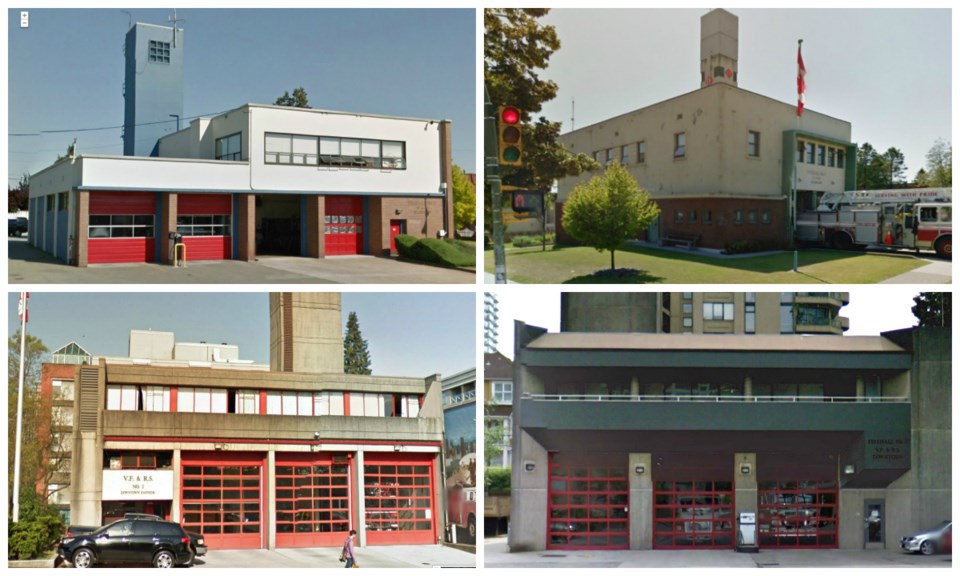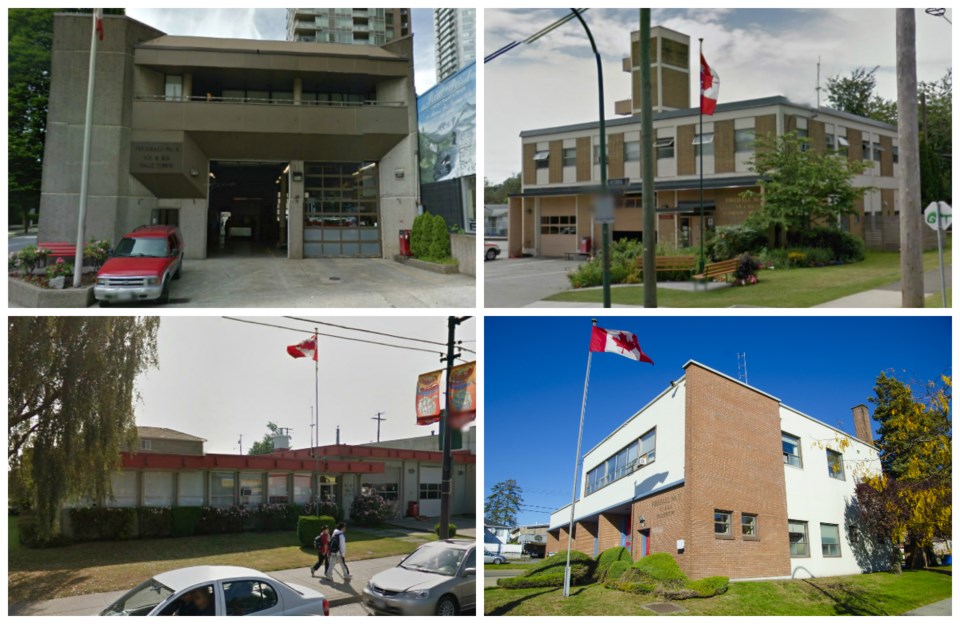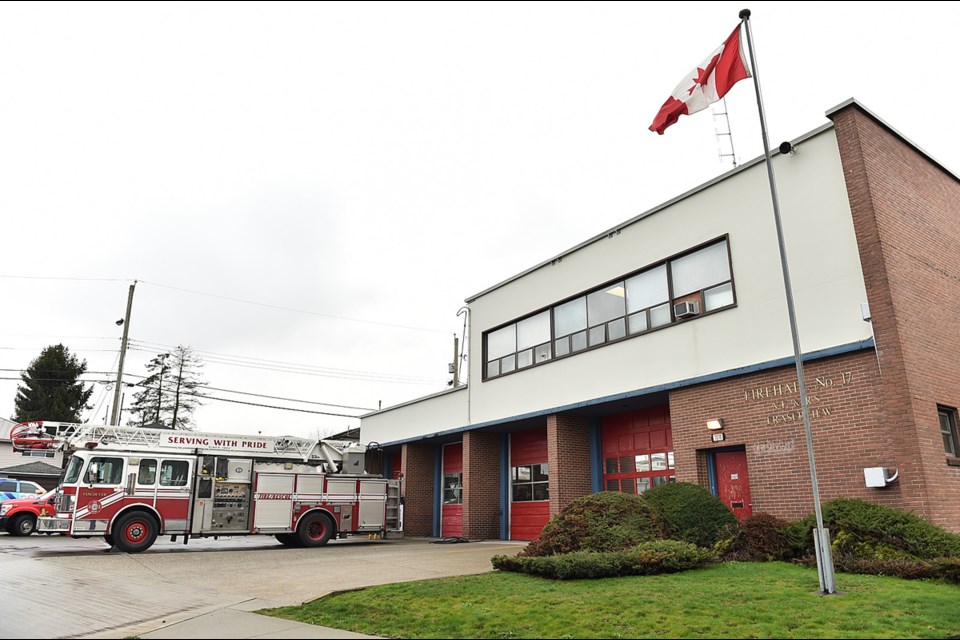One is already gone. Another is about to go. Modernist fire halls, that is.
The city is slowly replacing some of the city’s fire halls because they’re old, in disrepair, in danger of falling in an earthquake, and/or they no longer meet the operational needs of the fire department.
Fire halls categorized as modernist were built between the early 1950s and mid-1970s and feature a stream-lined design.
Heritage Vancouver’s Patrick Gunn said through minimizing their design, the architects celebrated the buildings’ utilitarianism. In the fire halls’ case, unique features include huge, open bays and massive hose-drying towers.
“The architects from the ’50s on, they looked at this use and, instead of hiding it, they really celebrated it and that’s where you come up with the amazing, strong, visual forms,” Gunn said.
Architectural legacy
No. 5 fire hall at 3090 East 54th Ave. — one of the earliest of the modernist fire halls — was demolished in 2016. Dating back to 1952, it was designed by Townley and Matheson, the architects of city hall. It’s being replaced with a new building topped with affordable housing. The expected completion date is the end of 2018.
Gunn said while the building needed upgrading there were ways to achieve that without demolishing it.
“It’s a community loss. It’s a visual point in the community similar to schools. So you eradicate that and then you have something new built, which is functional and safe, but Vancouver has lost another piece of its architectural legacy, which plaques and photos can’t replicate,” he said.
Fire hall No. 17 will be the next to go. Located at 7070 Knight St., it was built in 1954.
Mayor Greogor Robertson and other officials announced plans for its replacement Feb. 9. An energy-efficient building constructed to Passive House standards will take its place. The new building will also be used as a post-disaster hub in the event of an information technology network breakdown during an emergency such as an earthquake.
The old fire hall will be knocked down in coming months, as soon as a temporary fire hall is built at the rear of the site for the department’s use until the new building is ready.
Watch list
Heritage Vancouver raised the alarm that some fire halls could be lost in 2014 when modernist fire halls landed in the sixth position on its annual endangered sites watch list.
The organization argued the buildings represented “an important part of the movement towards modernist civic architecture in Vancouver during the post-war period” and that they should be preserved.
Aside from highlighting fire hall No. 5, and naming No. 17 on the 2014 watch list, Heritage Vancouver also cited concerns about the future of five other modernist fire halls:
- No. 2 at 199 Main St. at Powell, which was built in 1950 and renovated in 1974.
- No. 7 at 1090 Haro at Thurlow, which was built in 1974.
- No. 8 at 895 Hamiliton St. at Smithe, which is the reverse design of fire hall No. 7. The concrete building was built in 1973.
- No. 9 at 1805 Victoria at East Second Ave., which was built in 1959 with a concrete and masonry façade.
- No. 20 at 5402 Victoria Dr. at East 38th Avenue, which was built in 1962. Heritage Vancouver describes it as an “interesting single-storey structure with a window curtain.”
Fire halls that fall under the “brutalist” subset of modernist buildings include fire halls No. 7 and No. 8. Gunndescribes “brutalist” architecture as using a lot of raw concrete and being even more massive than mid-century ones.

“We’re not saying they should keep the fire halls as they are. Obviously, they have to be repurposed for contemporary use. They need to be made safe, they need to meet current code requirements, but that character of that modernist structure should still be preserved,” he said.
The organization outlined four recommendations on its 2014 watch list. It wants the city to:
- update the Vancouver Heritage Register under the Recent Landmarks Program to include the remaining modernist fire halls
- to investigate and incorporate current best practices in terms of heritage retention and adaptive reuse in updating the fire halls to meet present requirements
- to consider involving heritage structures in the hybridization of city facilities with community programs and affordable housing
- if a fire hall can’t be upgraded, the city should consider adapting it for another use and building a new fire hall at another site.
Gunn points to the Edwardian fire hall on East 22nd Avenue at Nootka Street (fire hall No. 15) as a significant Vancouver building that was readapted for modern use.
“Heritage Vancouver pushed the issue for years. Now it’s completely celebrated. They built a modern fire structure all around it and it’s part of the whole concept,” he said. “It’s completely restored and it’s interesting how the conversation has shifted. Now, everyone champions and celebrates this preservation.”
Gunn maintains that while it’s easier to demolish a building and start from scratch, it’s not always better for the long term due to the loss of character and social history.
He said the issue becomes more urgent every time a modernist fire hall is knocked down or slated for demolition.
“What happens is the list starts getting reduced down and the focus becomes even stronger on the ones that are remaining to the point where you have one left that’s recognized and then people are saying after the fact why weren’t the other ones [recognized],” he said.

Gunn stressed it’s critical for the public to offer feedback when important sites come up for public discussion or are discussed at open houses.
“It’s key if they see an asset that they value to give their feedback at the point where it can matter,” he said.
According to the City of Vancouver, fire hall No. 1, which was not on Heritage Vancouver’s 2014 watch list, is the next in line to be replaced as it’s at the end of its life. It is expected to be replaced in the 2019-2023 capital plan. Others in line to be replaced include fire halls No. 6, 8, 9 and 20, the latter three being on Heritage Vancouver’s watch list. Exact timelines for their replacement depend on funding capacity and other city priorities. The state of the buildings and functional needs of the fire department are among reasons for their replacement.
Second acts
But not all the existing fire halls need to be replaced, according to the city. Some can be maintained and upgraded. The city cites the old fire hall at 70th and Hudson, which now houses Marpole Place neighbourhood house, as well as the old fire hall that’s currently home to the Fire Hall Arts Theatre, as buildings no longer appropriate for Vancouver Fire and Rescue Services, but were significant from a heritage point of view and re-purposed for another use.
When considering the replacement of any city-owned building, the city says due diligence is exercised in the feasibility study portion of the project at which point the existing building is reviewed for its heritage significance, as well as its seismic risk and its general condition guided by the functional needs.
As to whether fire halls will be added to the heritage registry, the city says a consultant report with a list of potential resources to be considered for addition to the register is being reviewed by staff. A report to council will be presented this summer that outlines an approach to consider possible additions to the heritage register.
@naoibh



